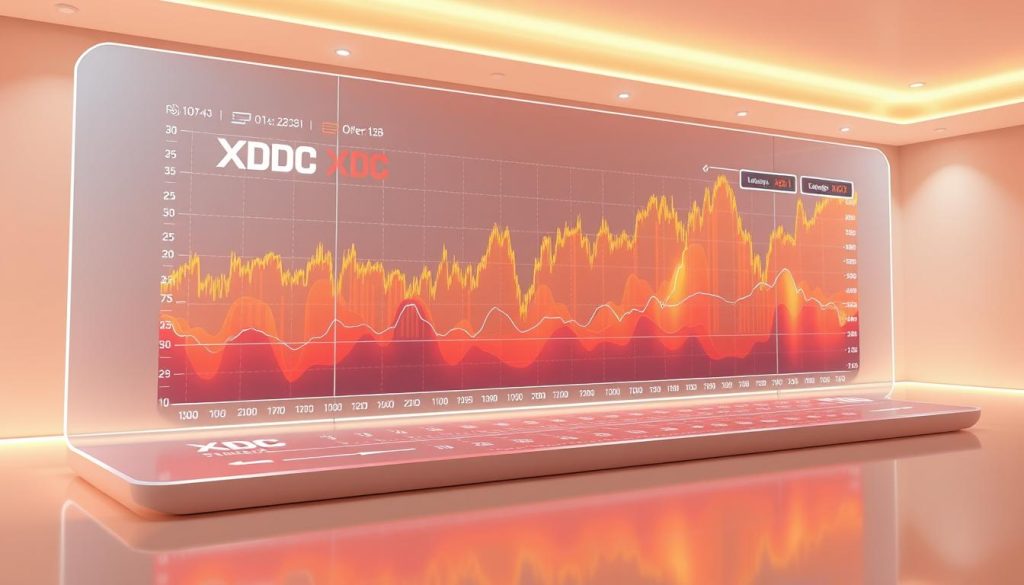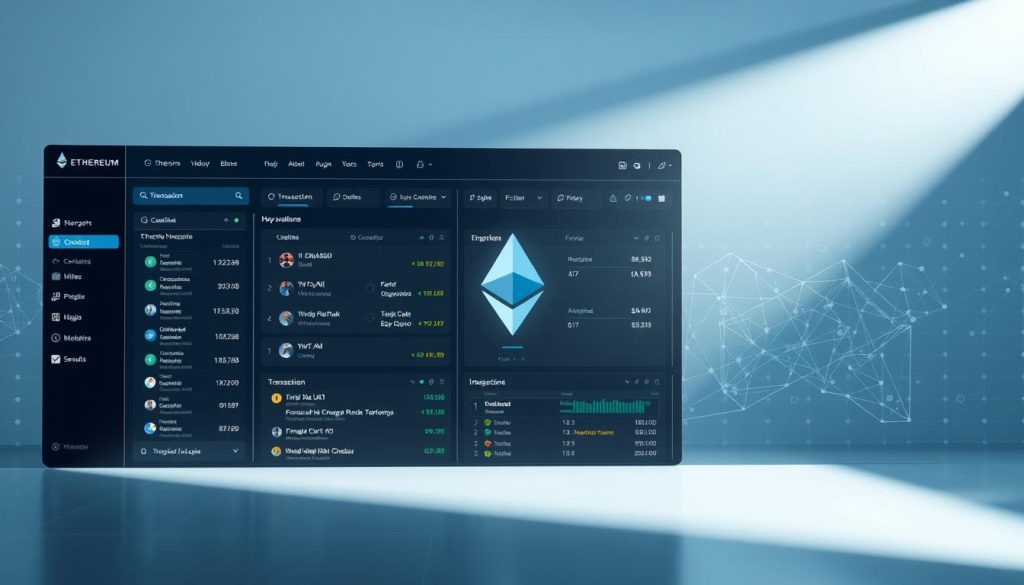A startling fact: over 4.3 million computers worldwide secretly mine cryptocurrency without their owners’ knowledge. These digital parasites drain electricity, slow systems, and benefit cybercriminals. They turn your machine into an unwilling participant in cryptocurrency mining operations.
I’ve battled these threats for over a decade. People often express confusion and worry about miners in cybersecurity. These aren’t traditional miners with hard hats and pickaxes.
Instead, they’re malicious programs that hijack your computer’s processing power. Most victims never realize it’s happening to them. Understanding these digital threats is your first line of defense.
My years of analyzing infected systems have taught me crucial lessons. This guide will help you protect yourself from these threats. It’s based on real evidence from my hands-on experience in the field.
Key Takeaways
- Malicious miners secretly use your computer’s resources to generate cryptocurrency for criminals
- These threats often go undetected while draining system performance and electricity
- Cryptocurrency mining malware has become one of the fastest-growing cyber threats
- Early detection and prevention are crucial for protecting your digital assets
- Understanding miner behavior helps you recognize warning signs before damage occurs
- Proper security measures can effectively block these resource-stealing programs
What Is a Miner in Cyber Security?
Cyber security miners are malware that hijack your computer to generate cryptocurrency. These digital parasites secretly drain your resources while hiding their presence. They’ve become increasingly sophisticated, making detection challenging.
I’ve analyzed these threats extensively. Their ability to conceal themselves while exploiting your device is remarkable. They turn your computer into a profit machine for cybercriminals.
Definition of Cyber Security Miners
A cyber security miner is malicious software designed to secretly use your computer’s processing power to mine cryptocurrency without your knowledge or consent. This practice, called cryptojacking, is a prevalent cyber threat I often encounter.
The software installs itself through various attack methods. It then solves complex math problems to generate cryptocurrency for the attacker. Its stealth nature makes it particularly dangerous.
Victims often notice performance issues before realizing they’re infected. Your computer may slow down, overheat, or use more electricity. I’ve seen entire networks compromised, with hundreds of machines unknowingly mining cryptocurrency.
| Legitimate Mining | Malicious Mining | Key Difference |
|---|---|---|
| Uses owner’s resources | Steals computing power | Consent and ownership |
| Transparent operations | Hidden processes | Visibility to user |
| Owner receives profits | Criminal gets rewards | Beneficiary identity |
| Regulated activity | Illegal operation | Legal status |
Role in Digital Ecosystems
These miners play a purely parasitic and destructive role in digital ecosystems. Unlike legitimate operations, cryptojacking steals resources from unsuspecting victims. They don’t invest in their own infrastructure.
My analysis shows how these miners integrate into digital environments. They’re designed to avoid immediate detection while remaining profitable. Their efficiency makes them hard to spot.
Modern cryptomining software can detect when you’re using your computer. It then reduces its activity, making detection even more difficult. This sophisticated behavior continues to evolve.
These operations can scale to massive proportions. A single cybercriminal might control thousands of infected devices. This creates a huge distributed mining network, generating substantial profits at victims’ expense.
The Importance of Miners in Cyber Security
Illicit mining operations pose a serious threat beyond stolen electricity and slow computers. These threats create vulnerabilities that spread through entire network infrastructures. Organizations often overlook the bigger picture when dismissing mining activities as minor nuisances.
Mining malware establishes footholds in systems, altering the security landscape of affected networks. These seemingly simple programs can become launching pads for sophisticated attack campaigns. I’ve seen this happen firsthand during my investigations.
Protecting Data Integrity
Mining operations severely impact data integrity when they infiltrate systems. The malware exploits security gaps that more dangerous threats target. Finding mining malware during an investigation usually indicates deeper compromises.
I once investigated a financial services company dealing with slow computers. We discovered mining software running alongside keyloggers and data exfiltration tools for months. The mining component served as perfect camouflage for the attackers.
While executives focused on the resource drain, attackers quietly harvested sensitive customer data. The illicit mining operation generated revenue as financial records flowed to offshore servers.
Enhancing Network Security
Mining threats create persistent connections to external command servers, posing unique challenges to network security. These connections form backdoors for other malware to exploit later. The software often disables security tools, leaving networks open to additional attacks.
I’ve witnessed mining operations create pathways for industrial espionage. Criminals earned money from cryptocurrency while simultaneously stealing trade secrets. This dual-threat approach is devastating for victims.
The table below shows common security impacts I’ve observed across different types of mining infections:
| Security Impact | Immediate Effect | Long-term Consequence | Detection Difficulty |
|---|---|---|---|
| Administrative Access | Elevated privileges granted | Gateway for advanced threats | High |
| Security Software Disabled | Antivirus bypassed | Undetected malware installation | Medium |
| Network Connections | External server communication | Backdoor establishment | Low |
| System Performance | Resource consumption | Operational disruption | Low |
These threats blend legitimate-looking network traffic with malicious activities. Mining communications appear normal to most monitoring systems. Meanwhile, the same infrastructure supports data theft and network reconnaissance.
Mining malware often survives system reboots and security updates. It can reinstall itself from hidden registry entries and file system locations. This resilience makes it valuable for criminal organizations planning long-term operations.
Recognizing these broader implications helps security teams prioritize their response strategies. Mining activity may signal a sophisticated attack campaign threatening your organization’s most valuable assets.
Types of Miners in Cyber Security
Cyber threats include two main types of malicious miners. These digital parasites have evolved over the past decade. Each type needs specific detection and removal techniques.
The miner types affect how you protect your systems. They determine the tools you need for security. Understanding their patterns can save time during incident response.
Crypto Miners
Crypto miners are common illegal mining activities. They steal your computer’s power to mine cryptocurrencies like Bitcoin or Ethereum. Their stealth abilities make them very dangerous.
Modern crypto mining malware is highly advanced. It can reduce activity when you use your computer. This makes detection very difficult.
I’ve seen cases where unauthorized mining only happened during off-hours. The miners would hide when users were active. This behavior is hard to spot.
The most dangerous crypto miners are those that fly under the radar, consuming just enough resources to remain profitable while staying below detection thresholds.
These programs often come through infected emails or websites. They can hide for months without being found. They cost money in electricity and can damage hardware.
Data Miners
Data miners collect information from your system. They gather browsing habits, personal files, and network details. Unauthorized mining of personal information is illegal.
Data miners can steal login details and business documents. They create user profiles for sale on dark web markets. The amount of data taken often surprises victims.
These miners focus on valuable information. Financial data and personal details are worth a lot. Advanced versions can track keystrokes and take screenshots.
Data miners are hard to spot. They look like normal system processes. Finding them requires special behavior analysis tools.
| Characteristic | Crypto Miners | Data Miners | Detection Method |
|---|---|---|---|
| Primary Target | System Resources | Personal Information | Resource Monitoring |
| Stealth Level | High | Very High | Behavioral Analysis |
| Performance Impact | Moderate to High | Low | System Performance Tools |
| Financial Damage | Electricity Costs | Identity Theft | Network Traffic Analysis |
Both miner types share some features. They use similar infection methods. However, their goals and detection methods are different.
I use various tools to fight these threats. Behavioral analysis tools work best. They can spot mining patterns even when malware tries to hide.
Prevention is key against both crypto and data miners. Update systems, handle emails carefully, and use strong endpoint protection. Keep improving detection to stay secure.
Tools and Technologies Used by Cyber Security Miners
Mining malware has evolved dramatically in five years. Today’s stealth mining tools are both impressive and scary. The sophistication of these threats keeps growing at a rapid pace.
These operations blend legitimate mining software with malicious innovations. Simple cryptocurrency miners have become complex systems. They now evade detection and maximize profits with ease.
Software Solutions
Modern stealth mining software is incredibly advanced. Some use process hollowing to hide malicious code in legitimate processes. This technique makes detection almost impossible for regular security tools.
Fileless malware is another new threat. It exists only in memory, leaving no trace on the hard drive. Some mining malware even reduces CPU usage when task manager opens.
“The barrier to entry for creating mining malware has dropped significantly, with ready-made kits available on underground forums.”
Certain variants can detect specific security tools. They pause mining when they sense investigation attempts. This ongoing battle between malware creators and security experts keeps intensifying.
The easy access to these tools is most worrying. Anyone can buy complete stealth mining kits on underground forums. This has led to a surge in diverse threats.
Hardware Considerations
Mining threats adapt well to different hardware setups. They can detect graphics cards and adjust their algorithms accordingly. This flexibility ensures efficient mining on any target system.
These threats switch between CPU and GPU mining based on available resources. They can also coordinate across multiple infected machines. This creates a powerful, hard-to-stop distributed mining network.
Advanced stealth mining operations use hardware fingerprinting. The malware checks system capabilities before deploying. Some even monitor system temperature to avoid alerting users through hardware damage.
These tools optimize for various processor types. They include specific tweaks for Intel, AMD, and ARM processors. This hardware awareness makes mining threats effective across many computing environments.
Statistics and Trends in Cyber Security Mining
The threat of what is a miner in cyber security is growing rapidly. Organizations struggle to keep up with this escalating problem. The scale of mining-related cyber attacks has reached alarming levels.
Many infections operate undetected for long periods. This means the true extent of the problem is likely much larger.
Current Market Data
Cryptojacking attacks have surged by over 400% in recent years. Millions of devices worldwide have fallen victim to these silent threats. I’ve seen mining malware run undetected on corporate networks for over two years.
The financial impact is severe. Cybercriminals generate hundreds of millions of dollars annually through illicit mining operations. This is just their profit.
The real cost to victims is much higher. Increased electricity bills, hardware wear, and productivity losses add up quickly. Compromised systems also pose significant security risks.
The shift toward mobile devices and IoT systems means the attack surface is expanding rapidly, and traditional security measures aren’t keeping pace.
Growth Predictions
Future predictions for these threats are concerning. Cryptocurrency values directly influence mining malware activity. When Bitcoin prices surge, new mining malware variants typically appear within weeks.
Mining malware is becoming more targeted and persistent. The numbers support this theory. Attack surfaces are expanding rapidly, especially with mobile devices and IoT systems.
Understanding what is a miner in cyber security is crucial. Traditional security measures can’t keep up with this evolving threat. Modern mining malware adapts, hides, and evolves.
This makes detection increasingly difficult. Cleanup is more complex than ever before. The persistence of these attacks is the most troubling trend.
Graphical Representation of Mining Activities
Graphs and charts reveal stories that numbers alone can’t tell. They’re my go-to method for understanding complex patterns in cryptocurrency mining. Visual data makes the difference between legitimate operations and threats clear.
Raw stats might show 85% CPU usage. But a graph reveals if it’s consistent mining or suspicious spikes. Visualization cuts through the noise and highlights what really matters.
Impact Visualization Techniques
Plotting resource consumption patterns reveals the impact of cyber security miners. Legitimate cryptocurrency mining shows steady, predictable usage curves. Cryptojacking activities display erratic patterns based on user activity and detection avoidance.
I’ve created custom dashboards tracking CPU usage, network traffic, and system performance. Mining malware signatures become distinctive once you know what to look for. Legitimate miners keep consistent resource allocation, while malicious ones constantly adjust.
Geographic heat maps reveal another fascinating layer. Some regions see mining malware waves linked to local crypto adoption. Mapping these attacks globally shows clear patterns that help predict future threats.
Time-Based Comparative Analysis
Tracking mining over time shows the shift from simple, resource-heavy miners to sophisticated, stealthy operations. Early malware used 90-100% of CPU resources, making detection easy. Modern variants rarely exceed 30% usage and adjust based on system activity.
Cryptocurrency market values and mining malware activity are clearly linked. Price spikes usually trigger new malware within 2-4 weeks. This pattern has held across market cycles, helping predict new threats.
Tools like the miner position index provide context for understanding these market-security threat connections.
| Mining Type | Resource Usage Pattern | Detection Difficulty | Market Correlation |
|---|---|---|---|
| Legitimate Mining | Consistent 80-95% | Low | Direct positive |
| Early Cryptojacking | Constant 90-100% | Low | Moderate positive |
| Modern Cryptojacking | Variable 15-30% | High | Strong positive |
| Advanced Persistent Mining | Adaptive 5-25% | Very High | Delayed positive |
These visuals have changed how I explain threats to stakeholders. A chart showing Bitcoin price and cryptojacking incidents tells a powerful story. When presented clearly, the data speaks for itself.
Challenges Faced by Cyber Security Miners
Battling malicious cryptomining is like playing a game with ever-changing rules. Criminals adapt their techniques faster than we can develop new detection methods. I’ve analyzed countless threats that seem to evolve overnight.
The technical challenges are daunting for security professionals. But the real complexity lies in the legal and ethical maze we navigate. It’s no longer just about catching the bad guys.
Technical Detection Obstacles
Mining malware has become incredibly sophisticated. Criminals understand our detection methods better than most people think. They’ve created techniques that make my job both frustrating and fascinating.
Here’s what I face regularly:
- Environment-aware malware that detects sandboxed analysis systems
- Anti-debugging techniques that make reverse engineering extremely difficult
- Polymorphic code that changes its signature to avoid detection
- Fileless attacks that operate entirely in memory
Mining malware can lie dormant for weeks. Some variants only activate under specific conditions. Others wait for high system loads to hide their resource use.
Detection gets harder when legitimate apps are compromised. The malware hides in trusted software, making it nearly impossible to spot. This creates an endless cat-and-mouse game.
Legal Complications and Jurisdictional Issues
The legal landscape of malicious cryptomining is complex. Unauthorized use of computing resources is illegal, but prosecution is challenging. Most operations start in places with weak cybercrime laws.
I’ve worked on cases where we identified the criminals. But legal action was impossible due to international law issues. Evidence collection is tricky since mining malware is designed to disappear.
Legal challenges include:
- Cross-border enforcement requires cooperation between multiple agencies
- Evidence preservation becomes difficult with cloud-based infrastructure
- Victim identification often spans multiple countries and legal systems
- Proving financial damages requires complex technical analysis
Modern mining malware leaves minimal forensic traces. This makes building court cases extremely difficult. Criminals know how to cover their tracks, leaving us with little evidence.
Ethical Considerations and Gray Areas
Some of the toughest situations involve ethical gray areas. I’ve seen malicious cryptomining in seemingly legitimate software bundles. This raises questions about user consent and legal responsibility.
The biggest dilemma is when users technically agree to mining software installation. These agreements often hide in unread terms of service. The legal status becomes unclear when consent exists on paper but not in reality.
Security pros must balance protection with user privacy. Aggressive anti-mining measures can affect good apps and create false alarms. This frustrates users and can hurt trust in security systems.
Finding the right balance requires constant adjustment. We must consider the broader effects of our security measures. At the same time, we need to protect users from mining malware threats.
The challenge goes beyond technical solutions. We need better user education and clearer laws. International cooperation is also crucial. Without addressing these issues, we’ll keep fighting an uphill battle against sophisticated threats.
Frequently Asked Questions About Cyber Security Miners
People often mix up legitimate cryptocurrency mining with malicious activities. They’re unsure about qualifications and how mining relates to hacking. Let’s clear up some common misconceptions.
The term “mining” can be misleading. It sounds harmless, but criminals use it to steal computing resources. This is called illicit mining.
What Qualifications Do Miners Need?
The answer depends on whether we’re talking about legitimate miners or criminals. Legitimate miners need different skills than those engaged in illegal activities.
Legitimate cryptocurrency miners need technical skills and business sense. They must understand blockchain technology and how to optimize hardware. Calculating profitability and managing costs are also important.
Some miners get certifications in blockchain or cybersecurity. Others learn through hands-on experience. Both approaches can lead to success.
Criminals behind illegal mining activities need different skills. They create malware to hijack computers and use social engineering to trick victims. Their expertise ranges from basic to highly sophisticated.
How Does Mining Relate to Hacking?
Mining itself isn’t hacking – it’s a legitimate process for validating cryptocurrency transactions. Criminals abuse this process by stealing computing power.
They install mining software without permission, slowing down victims’ computers. The key difference is consent and ownership of the resources being used.
Legitimate miners own their hardware or rent it legally. The line can blur when employees install mining software on company computers.
The main distinction is always permission. Legitimate mining uses owned or licensed resources. Malicious mining steals computing power from unsuspecting victims.
| Aspect | Legitimate Mining | Illicit Mining | Legal Status |
|---|---|---|---|
| Resource Ownership | Owned or legally rented hardware | Stolen computing power | Legal vs Criminal |
| User Consent | Full knowledge and permission | No consent from victims | Authorized vs Unauthorized |
| Installation Method | Manual setup by owner | Malware deployment | Legitimate vs Malicious |
| Profit Distribution | Miner keeps all earnings | Criminal steals all profits | Rightful vs Theft |
| System Impact | Expected performance reduction | Unexpected slowdowns | Transparent vs Hidden |
Some cases involve gray areas that complicate investigations. Browser-based mining scripts sometimes operate in legal gray zones. Website owners might use mining code instead of ads for revenue.
The ethics become murky when disclosure is unclear. Users might agree without understanding what they’re consenting to. These situations need careful legal analysis.
Illegal mining activities often use botnets – networks of infected computers. Criminals control thousands of machines at once. Each infected computer contributes a small amount of processing power.
Detecting mining malware can be tricky. It often mimics legitimate processes and may only run when computers are idle. Some variants pause when users are active to avoid suspicion.
The relationship between mining and hacking keeps changing. New attack methods appear regularly. Criminals adapt their techniques to avoid detection.
Always monitor your systems for unusual activity. Unexpected slowdowns might indicate illicit mining. High electricity bills can be a warning sign. Regular security scans help catch mining malware.
Best Practices for Effective Cyber Security Mining
Successful defense relies on robust protocols and ongoing education. The threat landscape evolves constantly. What worked before might leave you vulnerable now.
A solid defense strategy requires understanding sophisticated unauthorized mining attacks. These targeted operations can hide for months, evading detection.
Security Protocols
Network monitoring is crucial for effective defense. Establish baseline metrics for CPU usage, network traffic, and power consumption. Unexpected spikes, especially during off-hours, may signal trouble.
Real-time monitoring tools catch stealth mining that antivirus software misses. Set up behavioral analysis instead of signature-based detection for better results.
Endpoint protection must go beyond standard security software. Application whitelisting helps prevent mining malware from running on your systems.
Power consumption monitoring can reveal hidden mining activities. Mining operations use lots of electricity. Unusual power usage patterns may indicate unauthorized mining.
Companies like AIXA Miner are enhancing security through platform audits. This shows how proactive measures can prevent mining-related incidents.
Continuous Training
The threat landscape changes rapidly, making old knowledge obsolete quickly. Stay current with mining malware trends through conferences and threat intelligence sharing.
Security awareness training should happen regularly. Update your team on new stealth mining techniques and detection methods monthly.
Build relationships with other security professionals to share information. This helps everyone stay ahead of emerging threats and defense strategies.
Create a culture where security awareness is part of daily operations. Update incident response procedures and assess security controls regularly.
Future of Miners in Cyber Security
Cyber security mining is changing fast. New developments are reshaping how we tackle these challenges. AI integration into mining threats marks a big shift in sophistication.
Emerging Technologies
AI-powered mining malware is getting smarter. It learns from system behavior and adjusts resource use to avoid detection. These threats change their tactics in real-time, making old security measures less useful.
Edge computing and 5G networks create new weak spots. IoT devices mean millions of targets with little protection. Smart homes, industrial systems, and mobile devices are prime targets for mining operations.
Expert Predictions and Insights
Mining threats will become more focused and long-lasting. Criminals will target high-value areas like cloud computing and cryptocurrency exchanges. As cryptocurrencies become more common, criminals can hide their activities more easily.
The next step goes beyond simple cryptocurrency mining. These tools may join in distributed computing attacks and AI model theft. They might also work on legit computing projects to collect rewards.
This variety makes it harder for security pros to spot and stop these threats. The future of cyber security mining will require new, smarter approaches to stay ahead.










 Bitcoin
Bitcoin  Ethereum
Ethereum  Tether
Tether  XRP
XRP  USDC
USDC  TRON
TRON  Lido Staked Ether
Lido Staked Ether  Dogecoin
Dogecoin  Figure Heloc
Figure Heloc